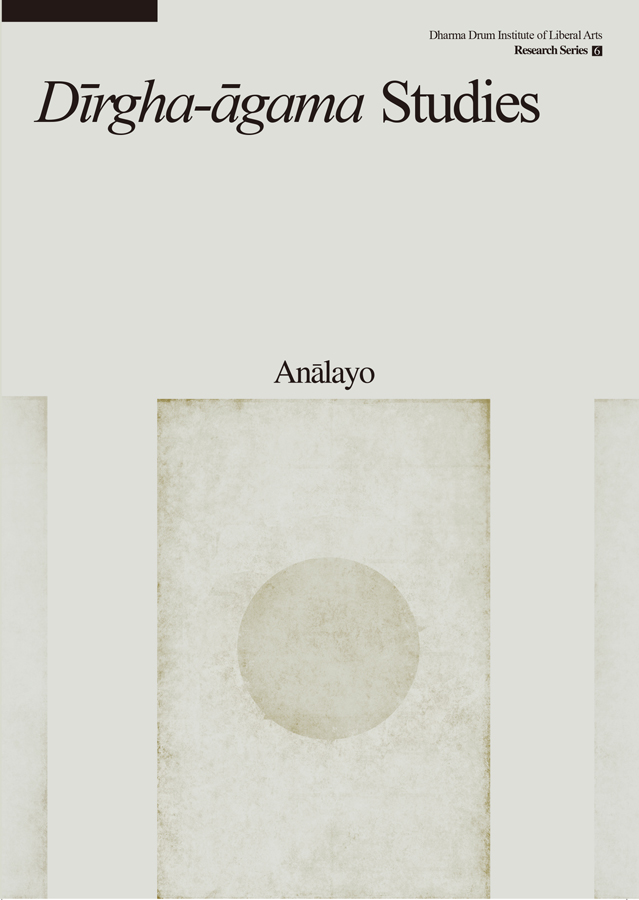商品圖片
(英文版)長阿含研究Dīrgha-āgama Studies
作者:Anālayo
出版社:法鼓文化
出版日期:2017年06月01日
語言:英文
系列別:法鼓文理學院論叢
規格:平裝 / 21x15 cm / 688頁 / 單色印刷
商品編號:1111180061
ISBN:9789575987497
定價:NT$700
會員價:NT$595 (85折)
序/後記
< 回商品頁Foreword
↑TOP
The last decade has seen an impressive increase in comparative Agama studies. Such a development is not monocausal; quite the contrary, there are a number of reasons that contribute to this renewed interest. The most important one appears to be the ongoing digitization of the source material. We owe it to the digital age that texts in very different languages and equally different scripts appear rather effortlessly on the very same screen in front of the scholar. Reassuringly, the scholar is still necessary, and in fact he or she is as indispensable a prerequisite as the source material. It is still the scholar who has to make sense of the texts and to arrange them in a way that allows meaningful comparison, and in fact it is difficult to imagine that this kind of work could ever be coped with by a machine. Yet, looking back on the digital development of the last twenty years, nothing seems inconceivable. At present, however, comparison still requires a distinct competence in the languages and the scripts referred to above, and, despite the general upsurge Buddhist Studies has witnessed over the last decades, this requirement naturally narrows down the number of scholars who are in a position to carry out such comparative research.
During the last years Bhikkhu Analayo has established himself as one of the leading academics within this field of research, and he has probably become its most prolific author. Usually starting from the Pali version of a canonical discourse, he compares it with its counterpart(s) preserved as translations in the Chinese Tripi-taka, but he also draws freely on translations into Tibetan and, especially, on Sanskrit parallels whenever available. His studies have led him to engage with questions that go far beyond the mere comparison of related versions of a text, most notably the questions of orality, historicity, and structure.
His publications on texts of the Majjhima-nikaya/Madhyama-agama, the Samyutta-nikaya/Samyukta-agama, and the Anguttaranikaya/Ekottarika-agama have already been collected into impressive volumes; the purpose of the present volume is to do the same with regard to the discourses contained in the "Long Collection" or, perhaps better, the "Collection of the Long (Discourses of the Buddha)", the Digha-nikaya/Dirgha-agama. This part of the Sutrapitaka offers an exceptional case to scholarship in that there are at least three different versions preserved, and not only two, as is normally the case. Two of these three, or even four, versions, the Pali Digha-nikaya and the 長阿含 Chang ahan, the "Long Collection" contained in the Chinese Tripitaka, are complete. The third, the Dirgha-agama in Sanskrit, belongs to the literature of the (Mula-)Sarvastivadins; only about fifty per cent is available, mostly represented by the remains of a single manuscript that probably stems from the area of Gilgit in Northern Pakistan, and, to a much lesser degree, by its counterpart preserved in manuscript fragments from Central Asia. Despite the rather unsatisfactory state of preservation, the contents and structure of this Dirgha-agama are fully known and therefore available to comparative research.
During the last years Bhikkhu Analayo has established himself as one of the leading academics within this field of research, and he has probably become its most prolific author. Usually starting from the Pali version of a canonical discourse, he compares it with its counterpart(s) preserved as translations in the Chinese Tripi-taka, but he also draws freely on translations into Tibetan and, especially, on Sanskrit parallels whenever available. His studies have led him to engage with questions that go far beyond the mere comparison of related versions of a text, most notably the questions of orality, historicity, and structure.
His publications on texts of the Majjhima-nikaya/Madhyama-agama, the Samyutta-nikaya/Samyukta-agama, and the Anguttaranikaya/Ekottarika-agama have already been collected into impressive volumes; the purpose of the present volume is to do the same with regard to the discourses contained in the "Long Collection" or, perhaps better, the "Collection of the Long (Discourses of the Buddha)", the Digha-nikaya/Dirgha-agama. This part of the Sutrapitaka offers an exceptional case to scholarship in that there are at least three different versions preserved, and not only two, as is normally the case. Two of these three, or even four, versions, the Pali Digha-nikaya and the 長阿含 Chang ahan, the "Long Collection" contained in the Chinese Tripitaka, are complete. The third, the Dirgha-agama in Sanskrit, belongs to the literature of the (Mula-)Sarvastivadins; only about fifty per cent is available, mostly represented by the remains of a single manuscript that probably stems from the area of Gilgit in Northern Pakistan, and, to a much lesser degree, by its counterpart preserved in manuscript fragments from Central Asia. Despite the rather unsatisfactory state of preservation, the contents and structure of this Dirgha-agama are fully known and therefore available to comparative research.




